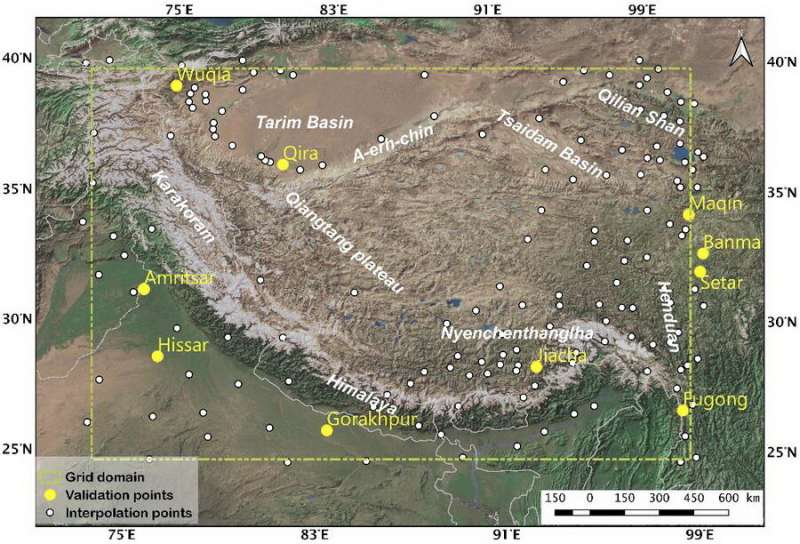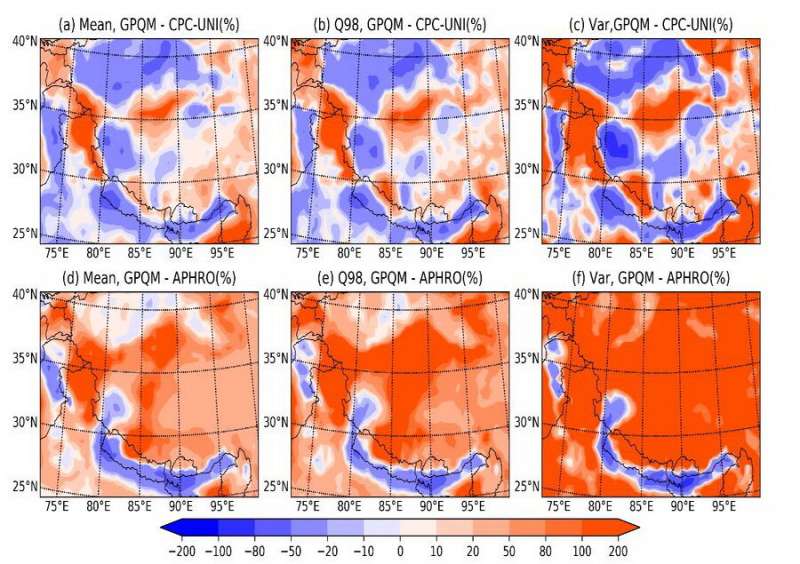Scientists improve gridded precipitation dataset for Tibetan Plateau

An accurate gridded precipitation dataset is essential for a better understanding of climate change, and hydrological and ecological processes on the Tibetan Plateau. However, the precipitation observation network in this region is sparse. The observed precipitation is susceptible to complex meteorological and orographic conditions, limiting the accuracy of the gridded precipitation dataset. The variety of precipitation instruments in the Tibetan Plateau and surrounding areas has also seriously affected the correction of measured precipitation.
By compensating the precipitation undercatch from different kinds of instruments around the Tibetan Plateau and optimizing the precipitation frequency distribution in the interpolation scheme, a research team from the Northwest Institute of Eco-Environment and Resources (NIEER) of the Chinese Academy of Sciences (CAS) proposed a new precipitation dataset.
The dataset uses the observed precipitation of 159 stations as the data source (Fig. 1) and corrects the gauge undercatch. Then by comparing six commonly used interpolation schemes using precipitation frequency error as the evaluation standard, the optimal interpolation scheme suitable for the Tibetan Plateau is obtained.
In addition, a set of daily gridded precipitation dataset with a spatial resolution of 10km from January 1, 1980 to December 31, 2009 is obtained based on those works.
The results show that undercatch correction is necessary for station data, which can reduce the distributional error by 30% at most. A thin-plate splines interpolation algorithm considering altitude as a covariate is helpful to reduce the statistical distributional error in general.

Compared with the existing gridded precipitation dataset, this dataset has better precipitation frequency distribution characteristics, a more reasonable mean value, variance, and a better suppressive smoothing effect widely existing in the previous gridded precipitation products (Fig. 2).
The results provide a relatively reliable gridded precipitation dataset for those hydrometeorological studies on the Tibetan Plateau.
The dataset has been published online in a paper titled "Reducing the Statistical Distribution Error in Gridded Data for the Tibetan Plateau" in the Journal of Hydrometeorology.
More information: Jiapei Ma et al. Reducing the Statistical Distribution Error in Gridded Precipitation Data for the Tibetan Plateau, Journal of Hydrometeorology (2020). DOI: 10.1175/JHM-D-20-0096.1
Provided by Chinese Academy of Sciences



















